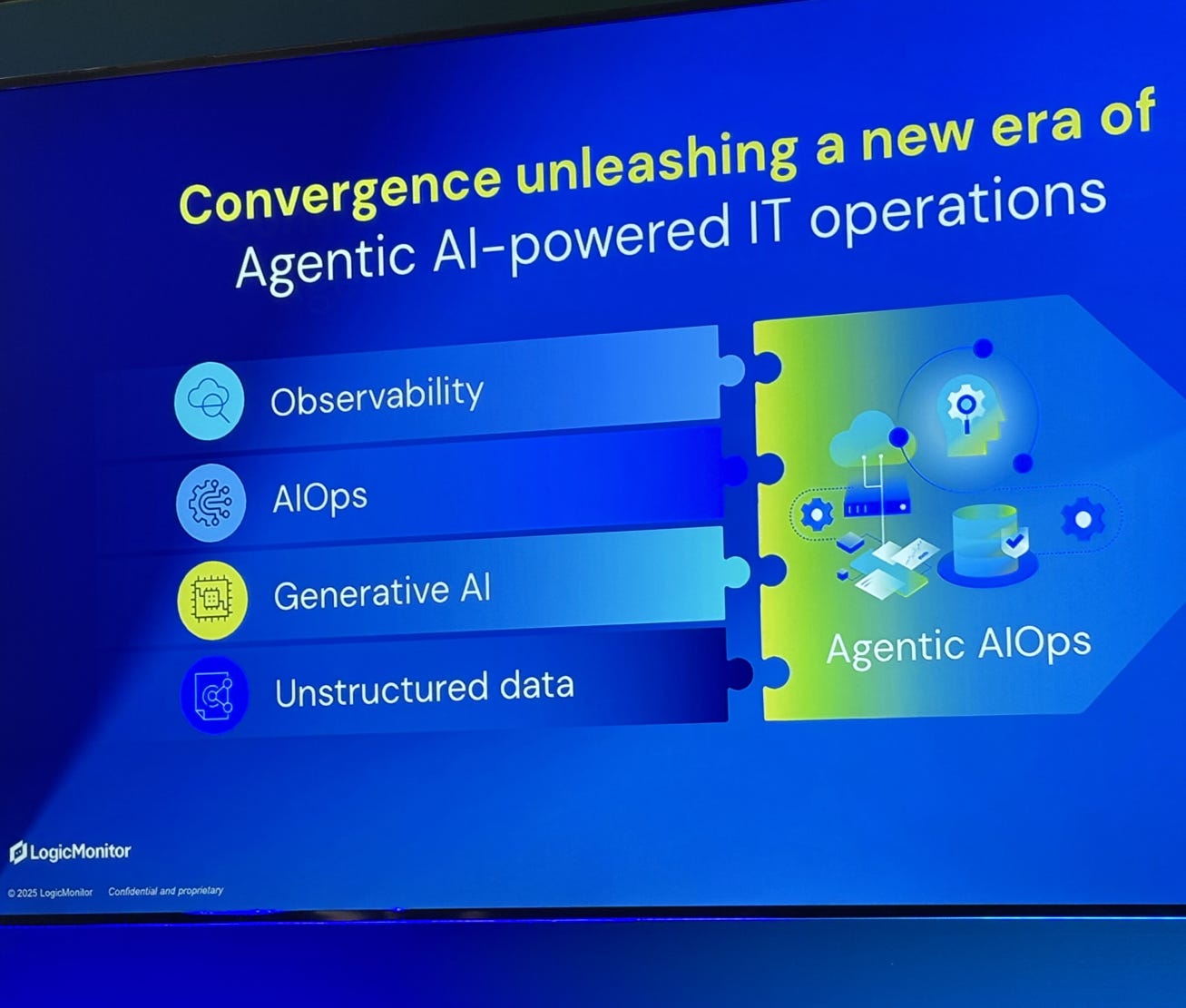Enterprises Are Struggling with Agentic AI Tools—LogicMonitor Offers a Path Forward
Solving IT chaos with smarter AI: reduce alerts, gain clarity, and drive meaningful business outcomes.
In the ever-evolving digital landscape, enterprises are inundated with data, tools, and expectations. As businesses strive to deliver seamless digital experiences, the pressure on IT operations to detect, manage, and resolve problems swiftly is immense. Artificial Intelligence for IT Operations, or AIOps, emerged as a promising solution to ease this burden.
Designed to automate and enhance IT operations using AI, AIOps platforms ingest data from various sources—metrics, logs, events, and traces—and analyze it to detect anomalies, predict outages, and suggest fixes. But despite their potential, many enterprises find themselves underwhelmed by AIOps tools that are often complex, brittle, and limited in real-world impact.
At the heart of these struggles is the rise of agentic AI tools—AI systems that analyze, predict, and take action autonomously. While agentic AI promises to transform IT operations, enterprises face significant barriers to achieving this level of automation. The story of Syngenta, a global agritech company, illustrates both the pain points of traditional AIOps and the potential of a reimagined approach.
Too Many Alerts, Too Little Action: Syngenta's Wake-Up Call
With 30,000 employees across 90 countries, Syngenta operates in challenging environments with poor network infrastructure. Their IT team, managing over 9,000 network devices, drowned in noise—over 12,000 daily alerts. Faced with this overwhelming volume, their strategy became reactive, focusing only on the most urgent problems—the equivalent of sending fire trucks only to homes already engulfed in flames while ignoring smoke alarms.
Buried in this sea of alerts, Syngenta missed a long-standing BGP peering issue, a critical network configuration problem. The team couldn’t see it amid the constant barrage of warnings. In agriculture, this wasn’t just a tech issue—it affected machinery calibration, threatening the integrity of seed production and its business outcomes.
To regain control, Syngenta deployed LogicMonitor’s AIOps platform. Initially skeptical, they expected little from “another AI tool.” Yet the results were immediate.
“It immediately, almost within the hour, we started to see a marked reduction in tickets,” said Chris Kline, head of Global CIO advisors at LogicMonitor. “The tickets that were coming through had data in the description fields that accurately told us what was going on, giving us a sense for the impact.”
Over the following days and weeks, ticket volume plummeted, and for the first time in months, the IT team could focus on long-term fixes rather than crisis management.
The Real Challenges of Agentic AI in the Enterprise
Syngenta’s experience reflects many enterprises' broader challenges in implementing agentic AI tools. AIOps, first coined by Gartner in 2016, was envisioned as a solution for algorithmic IT operations. Later, it was redefined to incorporate artificial intelligence. The goal? Automate problem detection and resolution through analytics and machine learning.
Yet, many AIOps platforms require heavy customization, complex rules engines, and manual topology mapping. As environments change, these setups quickly become outdated and require constant attention to stay relevant.
“AIOps today is too brittle,” Kline said in a speech at Tech Show London on March 12, 2025. “They perform what they're supposed to do. It takes many hands of effort to do so.”
Enterprises also face another costly inefficiency—incident response overload. Bridge calls with dozens of people become more about proving innocence than solving the problem.
“When that happens, too many folks are not trying to solve the problem. Instead, these people are trying to prove that it's not their fault,” Kline noted, pointing to the culture of blame that stifles progress.
A Smarter Approach: LogicMonitor’s Reboot of AIOps
LogicMonitor proposes a reboot of AIOps, built around what Kline calls an agentic-first architecture, to cut through the noise and reduce operational drag. Rather than passively reporting problems, an agentic architecture aims to influence and shape outcomes.
“It takes us out from saying, hey, there was a problem on the motorway, news at 11, and now says, here's what you can do, to go around it, to avoid it in the first place.”
LogicMonitor’s solution rests on four key components:
Unified Observability Data: All critical observability inputs—metrics, events, logs, traces—captured in a single platform, eliminating silos.
AI-Powered Correlation Engine: A central “brain” that filters noise, de-duplicates alerts, and surfaces real issues for action.
Generative AI: Converts technical alerts into plain language summaries, giving clear context on the issue, who is affected, and actionable next steps. As Kline illustrated, “We're not all network experts. I want something to tell me: what is the root cause and what should I do about it?”
Unstructured Data Intelligence: Incorporates tribal knowledge and historical data, suggesting solutions based on past incidents. It’s like “putting an exoskeleton on you so that you can lift problems that are way heavier than you would naturally be able to lift.”
In Syngenta’s case, this meant cutting alert volume by 80%, surfacing hidden issues, and freeing their team to focus on high-value tasks rather than constant triage.
Reclaiming Control and Focus
As enterprises struggle with complex IT environments, it’s clear that more tools and data alone will not solve the problem.
As Kline quipped, “Another watch would not have helped Syngenta. It would have made their problem worse.” Organizations need more data, better context, smarter tools, and faster insights.
For enterprises still haunted by recent outages or buried in unmanageable alert loads, the shift toward agentic AIOps offers a tangible way forward. With a streamlined, intelligent platform, teams can reduce noise, regain control, and focus on what truly matters—delivering value to the business.
As Kline concluded, “If this seems too good to be true, I want you to challenge us. This is not a bunch of marketing hocus pocus. This is where the industry is at now. It is the greatest shift I've seen in over 20 years.”
The path to clarity isn’t paved with more watches—it’s about learning to tell the time accurately every time.




